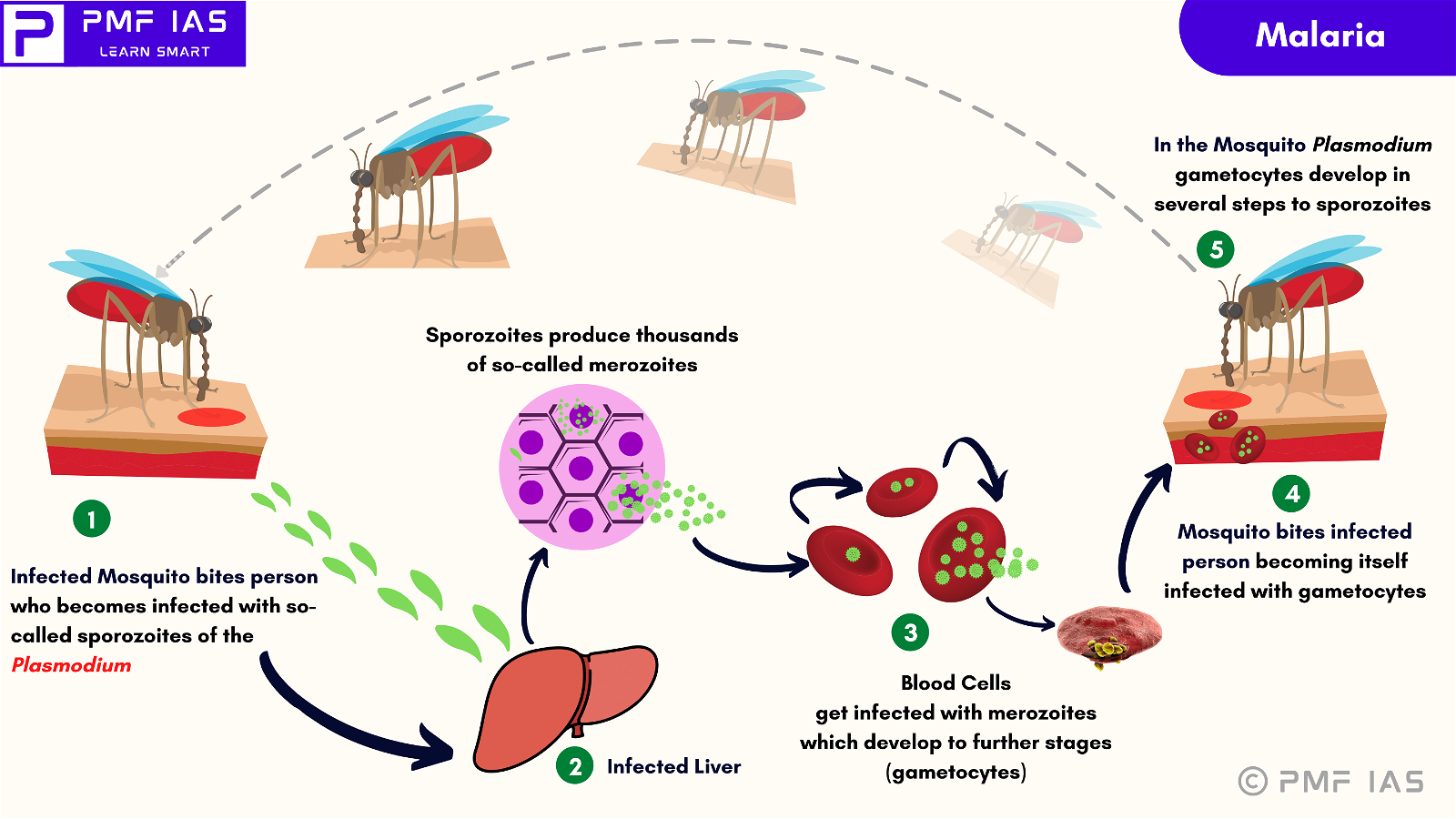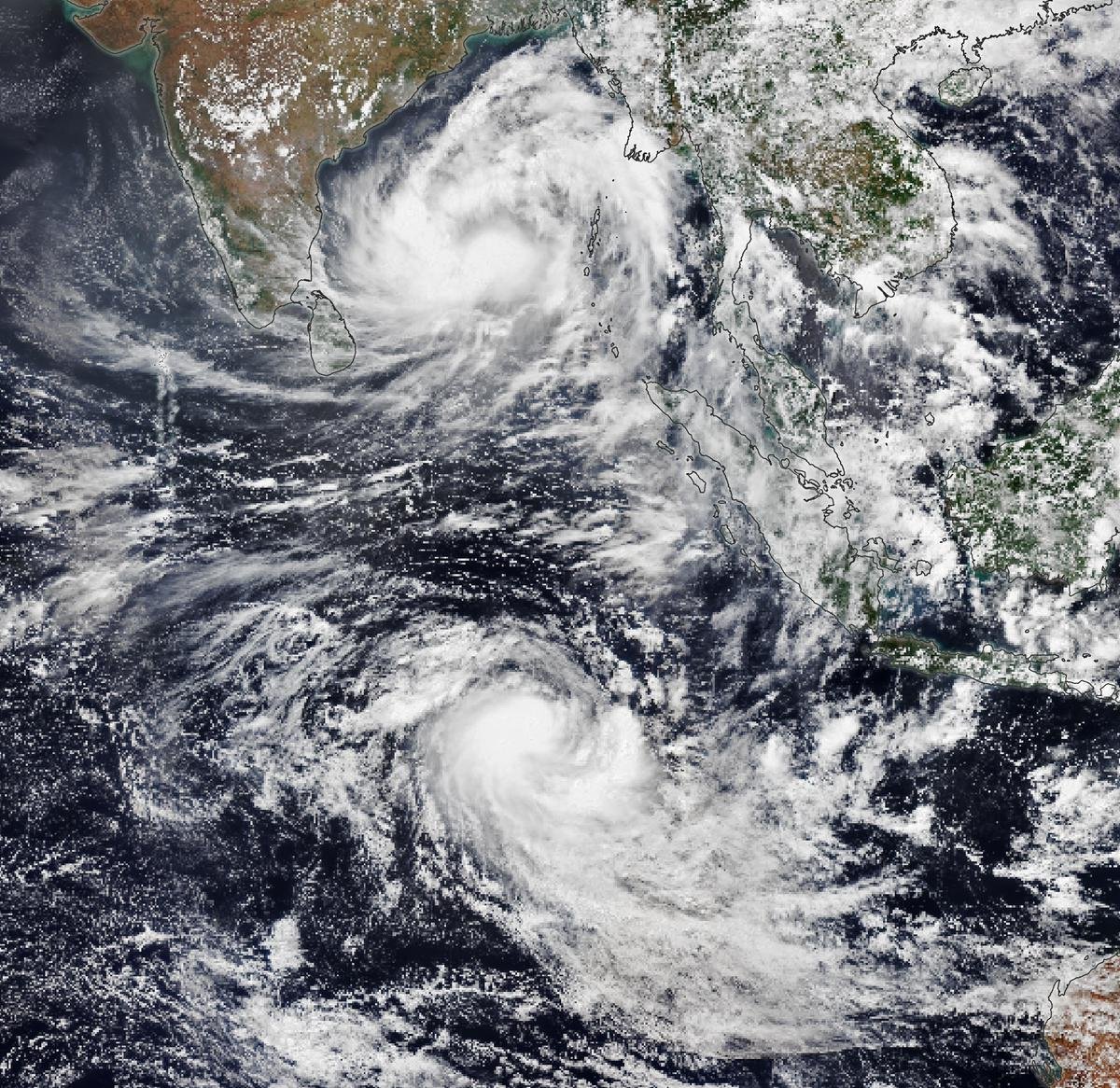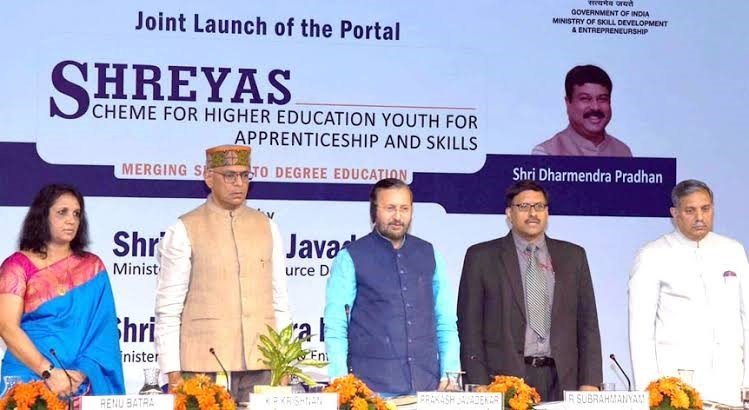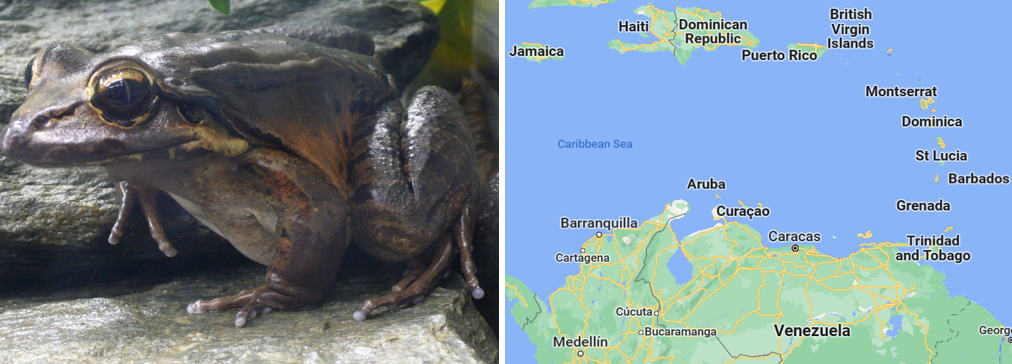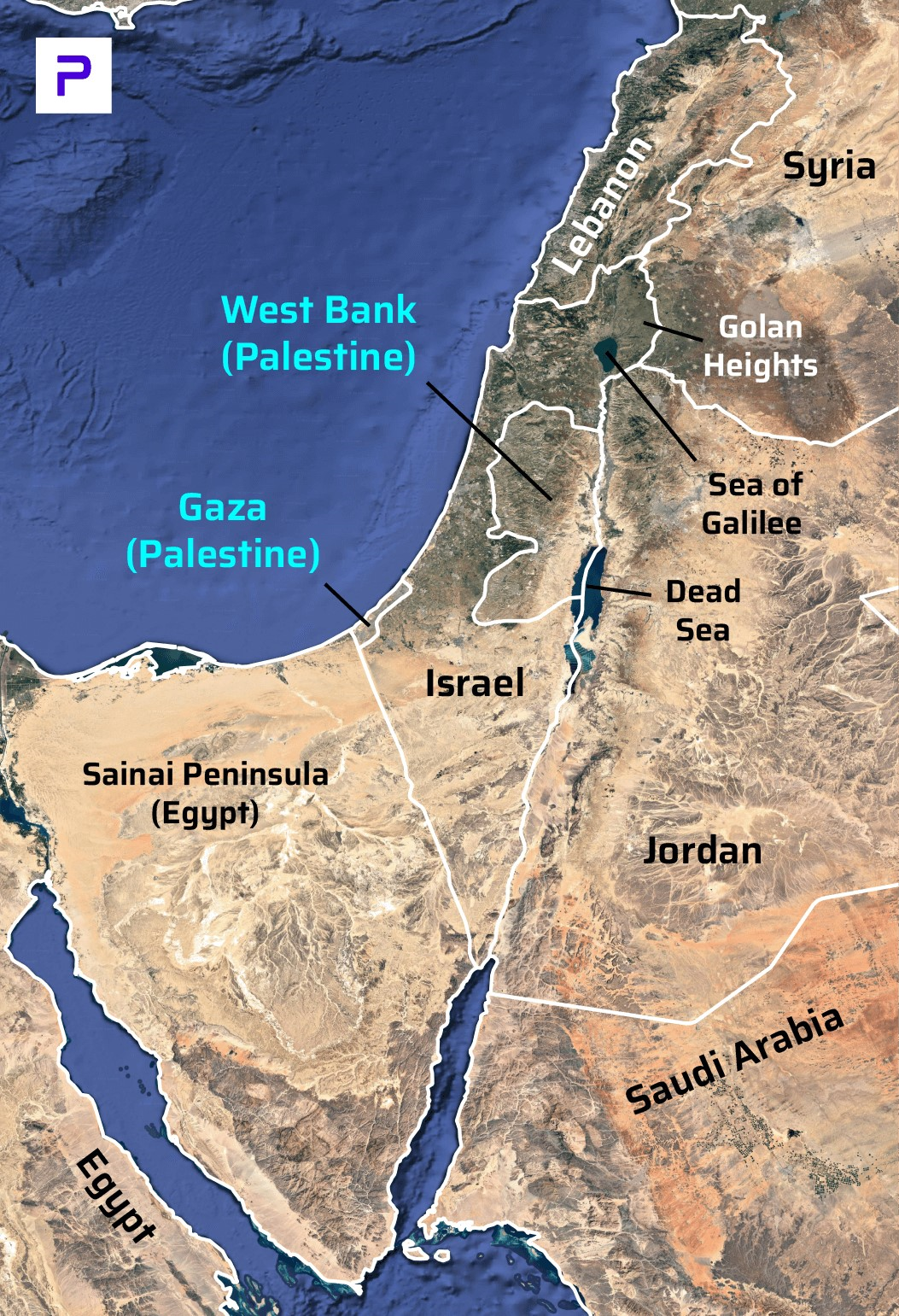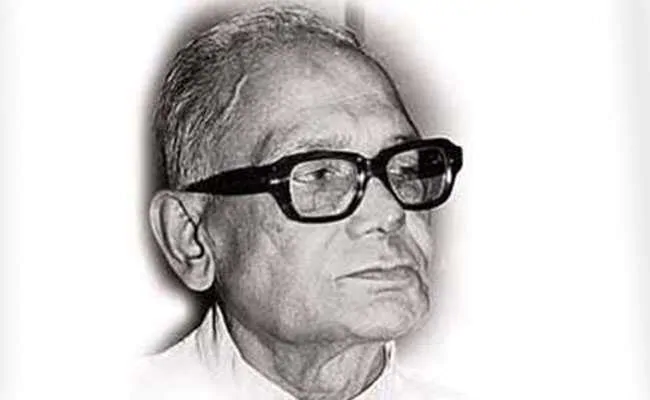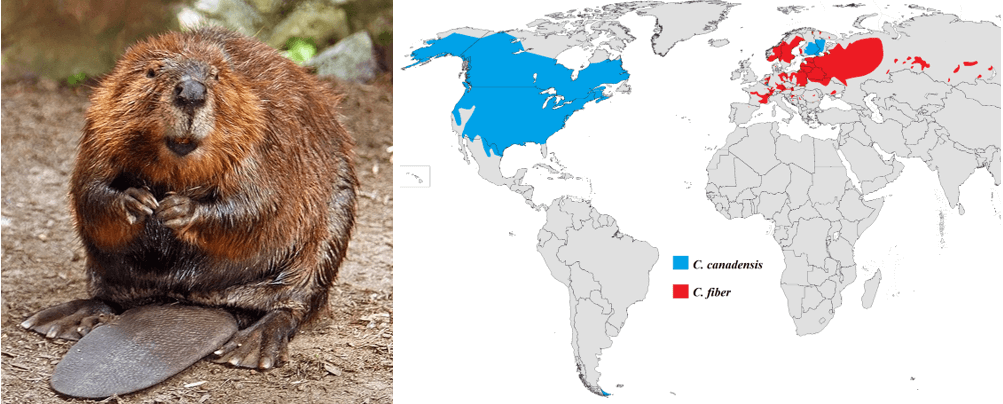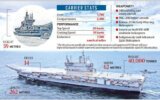
Current Affairs October 24-25, 2023: United Nations, United Nations Security Council, Intelligence Bureau out of RTI, Pink Bollworm, EVM, VVPAT
Subscribers of "Current Affairs" course can Download Daily Current Affairs in PDF/DOC
Subscribe to Never Miss an Important Update! Assured Discounts on New Products!
Must Join PMF IAS Telegram Channel & PMF IAS History Telegram Channel
{GS2 – IR – International Organizations} United Nations
- Context (IE): The United Nations is an international organisation founded in 1945.
- There are 193 UN Member States, all of which are part of the General Assembly.
- New members are admitted to the United Nations based on the Security Council’s recommendation and a two-thirds vote from the General Assembly.
- It has its headquarters in New York.
League of Nations
|
Inception of UN
- After the end of WWII (1939-45),
- Countries that had dominated world affairs experienced extensive destruction.
- Two new powers, the US and the USSR, emerged. They were ready to challenge each other.
- Amid a period of turmoil in international relations, the UN was founded on October 24, 1945.
- The UN was primarily tasked to maintain world peace & save future generations from the evils of war.
History of the Birth of the UN
|
Goals of UN
- The four main goals of the UN include:
- Maintaining international peace and security
- Developing friendly relations among nations
- Achieving international cooperation in solving international problems
- Being at the centre for harmonising nations’ actions in attaining these common ends.
United Nations Security Council
- The United Nations Security Council (UNSC) is one of the six principal organs of the UN and is considered the apex of the UN system.
- It is responsible for the maintenance of international peace and security.
- The UNSC is the only UN body with the authority to issue binding resolutions on member states.
UNSC Membership
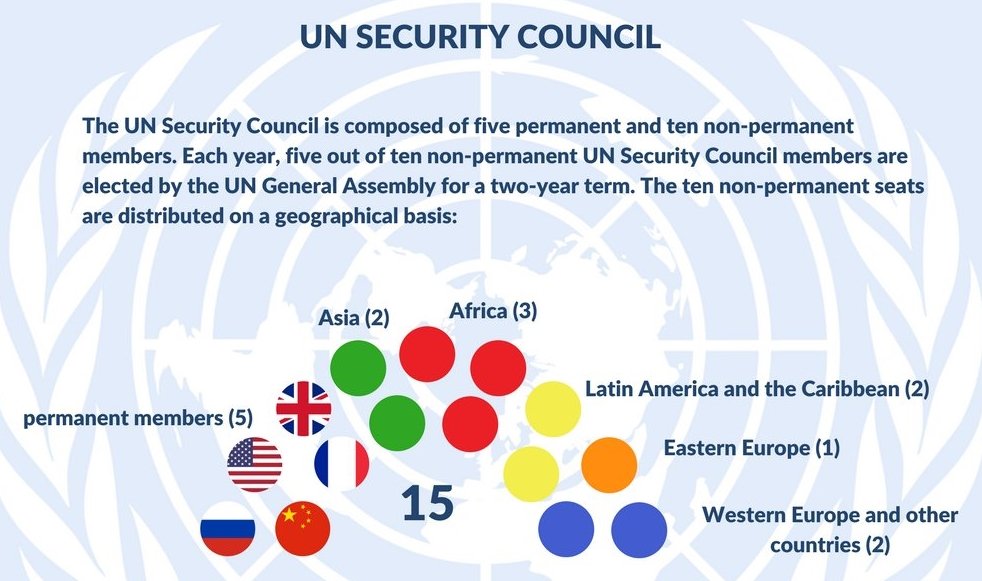
- UNSC consists of fifteen members, and each member has one vote.
- Permanent Members: Five (China, France, Russia, UK, and US) (P5)
- Non-permanent members: Ten
- Each year, the United Nations General Assembly (UNGA) elects five non-permanent members by a two-thirds majority for two years on a regional basis.
- A retiring member is not eligible for immediate re-election.
- The five permanent members have veto power — opposition from any of these five Countries blocks the resolution regardless of international support.
|
India and UNSC
- India is not a permanent member of the UNSC.
- In 2021, India was elected as a non-permanent member of the UNSC for the eighth time.
Benefits for non-permanent members
- Non-permanent members get monthly presidency of UNSC, and as a president, they could decide the matter to discuss in meetings.
- Non-permanent members can preside over several committees and working groups of UNSC.
Issues of UNSC
Troubling Role of P5 and its Veto
- Veto power makes P5 nations more equal than others, ignoring the collective will of 188 members.
- The veto system has become a tool to block the UN’s work and not encourage it.
- The recent conflicts in many states indicate the failure of the UNSC and the misuse of veto.
- During the Russia-Ukraine conflict, when Russia invaded a sovereign UN member-state, the UNSC proved powerless to respond because of a veto by Russia.
- Russia’s increasing resort to the veto has blocked resolutions on Ukraine, Syria, North Korea, etc.
Doesn’t Reflect the Present World Order
- The UNSC reflects the geopolitical realities of 1945 and not of today. Five countries are permanent members of the UNSC merely because they won a war 76 years ago.
- The world has changed, but not the UNSC. Lack of representation for Africa, South America and Asia is a major issue of UNSC (China is the only Asian P-5 member).
- Africa, with 55 member states, has no presentation in permanent membership.
- It is impossible to address the present problems if institutions do not reflect today’s world order.
- The lack of progress in reforms has “serious implications” for the relevance of the UN.
Obstacles to council reform
High procedural hurdles to amending the UN Charter
- Any amendment in the UN Charter requires:
- A two-thirds majority of the overall membership (129 of the 193 states in UNGA) with no opposition from permanent five members.
- To be ratified by two-thirds of the member states.
Divergent member state positions
- China is the only country among P5 opposing India’s entry into the UNSC. Support from other permanent members does not amount to anything since China can veto India’s candidacy.
|
Negotiating groups within UNGA are neutralising each other’s bid
L.69 Group
- It is a pre-reform group of developing countries.
- The group is seeking:
- An expansion of permanent and non-permanent membership to the UNSC
- Reform in the body’s working methods
- Better representation of developing country aspirations, including African countries and Small Island Developing States (SIDS).
G4 Group
- It comprises four countries: Brazil, India, Germany, and Japan.
- They support each other’s bids to become permanent members of the UNSC.
- They are demanding the reforms and representation of African countries in UNSC.
Coffee Club
- It is an informal group comprising 40 member states.
- It has been instrumental in holding back reforms to the UNSC.
- It opposes bigger regional powers from getting permanent seats in the UNSC.
- Italy and Spain are opposed to Germany’s bid.
- Pakistan is opposed to India’s bid.
Expansion of the Security Council
- Without structural changes, the UNSC’s performance and legitimacy will inevitably suffer.
- There is a need to strengthen and reform the UN by expanding permanent and non-permanent members of the UNSC.
- Inclusion of developing countries, including India and Africa, is essential to reflect contemporary realities.
|
Achievements of the UN
- Expansion of Membership: The UN comprised only 51 member states in 1945. De-colonisation led to an expansion of its membership. At present, 193 countries are members of the UN.
- Scope: The UN has expanded its scope to cover many global issues, such as health, environment, and women empowerment.
- Health: In 1948, it created the World Health Organisation (WHO) to deal with communicable diseases like smallpox, malaria, and HIV.
- Refugees: In 1950, the UN created the High Commissioner for Refugees to care for the millions displaced during WWII. It continues to be on the frontlines of crises faced by refugees worldwide.
- Environment: In 1972, the UN Environment Programme was created.
- War Crimes: In 2002, the UN established the UN Criminal Court to try those who have committed war crimes, genocide, and other atrocities.
Failures of the UN
- The UN has been seen as unrepresentative, particularly of the Global South.
- In 1994, the UN failed to stop the Rwandan genocide.
- In 2005, UN peacekeeping missions were accused of sexual misconduct in the Republic of Congo, and similar allegations have also come from Cambodia and Haiti.
- In 2011, the UN peacekeeping mission in South Sudan was unsuccessful in eliminating the bloodshed caused by the civil war that broke out in 2013.
- World Bank and the IMF have been criticised for furthering neo-liberal ideas – related to championing free markets and a reduced role of governments. This has been linked to deepening inequalities within countries.
Reform of the UN
- In recent years, there have been demands for reform of the UN. It includes:
- Reform of the organisation’s structures and processes
- Review the issues that fall within the jurisdiction of the organisation.
Reform of the organisation’s structures and processes
- Increase the UN Security Council’s permanent and non-permanent membership so that the realities of contemporary world politics are better reflected.
- The US and other Western countries want improvements in the UN’s budgetary procedures and administration.
|
Review the issues that fall within the jurisdiction of the organisation.
- Some countries want the UN to play a greater role in peace and security missions.
- Others want its role confined to development and humanitarian work (health, education, environment, population control, human rights, gender, and social justice).
India and UN reform
- India has supported the restructuring of the UN.
- India supports an increase in the number of both permanent and non-permanent members.
- India argued that the Security Council should have more developing countries.
- India itself wishes to be a permanent member of a restructured UN.
Arguments in favour of India becoming a permanent member of the UN
- India is the second most populous country in the world.
- India is the world’s largest democracy.
- India has participated in virtually all the initiatives of the UN.
- India’s role in the UN’s peacekeeping efforts is long and substantial.
- India’s economic emergence on the world stage.
- India’s growing importance in world affairs.
- India has made regular financial contributions to the UN and never faltered on its payments.
Main Organs of UN
(All were established in 1945 when the UN was founded)
Specialised Agencies of the UN
UN System
|
{GS2 – MoSJE – Schemes} Pradhan Mantri Anusuchit Jaati Abhuyday Yojana
- Context (PIB): Pradhan Mantri Anusuchit Jaati Abhuyday Yojana (PM-AJAY) is a scheme to reduce the poverty of the SC communities by generating additional employment opportunities.
- The scheme falls under the Ministry of Social Justice and Empowerment.
- The scheme works through Skill development Programs, income-generating schemes and other initiatives and has been implemented since 2021-22.
- It has merged 3 Centrally Sponsored Scheme namely:
- Pradhan Mantri Adarsh Gram Yojana (PMAGY)
- Special Central Assistance to Scheduled Castes Sub Plan ( SCA to SCSP)
- Babu Jagjivan Ram Chhatrawas Yojana (BJRCY)
Three Components of the PMAGY SCHEME
Development of SC-Dominated Villages into “Adarsh Gram”
- This component focuses on transforming villages with a significant Scheduled Caste (SC) population into model villages called Adarsh Gram.
Grants-in-Aid for District/State-Level Projects
- This component involves providing financial support for district or state-level projects aimed at the socio-economic upliftment of SC communities. These projects can include:
- Infrastructure development in SC-dominated villages, including those selected under the Adarsh Gram component.
- Construction of hostels/residential schools.
- Comprehensive livelihood projects encompassing aspects like skill development
- Financial assistance to acquire or create assets essential for livelihood generation.
Construction of Hostels in Top-Ranked Educational Institutions
- It is focused on constructing hostels in higher educational institutions ranked highly according to the National Institutional Ranking Framework (NIRF).
- Additionally, hostels will be constructed in schools, again funded fully or partially by the Centre/State/UT Governments and recommended by the Ministry of Education.
Adarsh Gram
- Adarsh Grams is a development program that implements existing schemes and specific new initiatives designed for the local context, which may vary from village to village.
- Under this, a model of local development is created, which can be replicated in other villages.
- It targets holistic development through personal, human, economic and social goals.

PMAGY VS SAGY
Identification of Adarsh Gram under the Sansad Adarsh Gram Yojana (SAGY)
|
{GS2 – Polity – Bodies – Executive} Intelligence Bureau out of RTI
- Context (LL): The Delhi HC has ruled that the Intelligence Bureau (IB) stands exempted from the rigours of the RTI Act by virtue of Section 24 (Act not to apply to certain organisations).
- The Intelligence Bureau (IB), considered the oldest surviving intelligence organisation in the world, serves as India’s internal security agency responsible for mitigating domestic threats.
- IB is an executive body and falls under the authority of the Ministry of Home Affairs.
- The IB director reports directly to the PM and is part of the Strategic Policy Group and the Joint Intelligence Committee of the National Security Council.
- Staffing: The IB draws its employees from law enforcement agencies such as the Indian Police Service (IPS), the Indian Revenue Service (IRS), and the military.
- Functions: The agency is responsible for counterterrorism, counterintelligence, intelligence collection in border areas, infrastructure protection, and anti-secession activities.

History
- The IB was founded in 1887 as Central Special Branch by the British Indian government.
- In 1921, it evolved into the Indian Political Intelligence (IPI), a surveillance agency that maintained close ties with Scotland Yard and MI5.
- After Indian independence in 1947, IPI was renamed as the Intelligence Bureau.
- Until 1968, it handled both domestic and foreign intelligence.
- The formation of the Research and Analysis Wing (RAW) for foreign intelligence led to IB focusing on domestic intelligence and internal security.
Research and Analysis Wing (RAW) – foreign intelligence
- The Research and Analysis Wing (RAW) is the country’s premier intelligence agency, created in 1968 to handle India’s external intelligence affairs.
- It was established to satisfy the need for increased intelligence that was identified during the 1962 Sino-Indian Border War and the Indo-Pakistani War of 1965.
- RAW operated under the Prime Minister’s Office and was intentionally established as a “wing” (executive body) versus an “agency” in order to bypass the RTI act.
Objectives
- Monitoring: Political, military, economic, and scientific developments in countries impacting India’s national security and foreign policy.
- Influence: Molding international public opinion and influencing foreign governments.
- Anti-Terror Operations: Neutralizing elements that pose a threat to India.
Security Agencies in india and their mandate
|
{GS2 – Polity – Bodies – Statutory} Uneven Spread of Medical Colleges in India
- Context (IE): The National Medical Commission (NMC) issued a regulation that temporarily suspended the establishment of new medical colleges and the expansion of existing ones in states.
- The suspension is for states with more than 100 seats/per million population.
- This decision has faced criticism from southern states, as they no longer qualify for additional medical education seats.
- According to the NMC, if medical colleges are evenly spread across the country as per this ratio, there is still the potential to add approximately 40,000 MBBS seats.
- States with an excess of medical seats won’t need to shut down colleges or reduce seats. This ratio only applies to new medical college establishments/courses from the 2024-25 batch onwards.
How are Seats Currently Distributed?
- At least 13 states and UTs have more than 100 seats/million population, recommended by WHO.
- Tamil Nadu and Karnataka have exceeded the NMC’s norm by 46% and 63%, respectively.
- Meghalaya has only 50 seats for an estimated 33.5 lakh people; these numbers for Bihar and Jharkhand are 2,565 and 12.7 crore and 980 and 3.9 crore respectively.
- Despite the government doubling the number of both undergraduate and postgraduate medical seats over the past nine years, some states continue to experience a significant shortage.
Rationale behind the NMC Guidelines
- To rationalize seat distribution in medical colleges.
- To Regulate a surge in the number of private medical colleges.
- To prevent staff migration by promoting a balanced distribution of medical colleges.
- For maintaining the quality of education and availability of trained staff across all regions.
- For equitable access to medical education for students from different regions.
National Medical Commission
Structure of NMC
|
{GS2 – Polity – IC – Elections} EVM and VVPAT
- Context (IE): The Election Commission (EC) has raised concerns about production challenges related to the Electronic Voting Machines (EVMs) and Voter Verifiable Paper Audit Trail (or VVPAT) machines due to semiconductor shortage.
- Semiconductors and chips are essential components for manufacturing EVMs and VVPATs.
- There are only two Indian PSUs that manufacture EVM machines.
- Bharat Electronic Limited (BEL)
- Electronics Corporation of Indian Limited (ECIL)
- The secret source code is only accessible to a few engineers.
- Engineers in the factory have no clue about the constituency-wise deployment of the machine.
- The EC is against involving private manufacturers to increase production capacity. They worry it could hurt people’s trust in the voting system.
Electronic Voting Machine (EVM)
- Electronic Voting Machine (EVM) is voting using electronic means.
- EVMs are used to cast votes without revealing your identity.
- It has replaced paper ballots in India’s local, state, and general (parliamentary) elections.
- EVM has two parts connected by a 5-metre cable.
- Control unit:
- The control unit is with the Election Commission-appointed polling officer.
- It is the EVM’s ‘brain’ — the balloting unit is turned on only after the polling officer presses the ‘Ballot’ button.
- Balloting unit:
- The balloting unit is in the voting compartment into which the voter enters to cast the vote in secret by pressing the button against the name and symbol of the candidate of her choice.
- Control unit:
EVM in the Indian election
- The first use of EVMs occurred in the general election in Kerala in May 1982; however, the absence of a specific law prescribing its use led to the SC striking down that election.
- Subsequently, in 1989, the Parliament amended the Representation of the People Act 1951 to create a provision for using EVMs in the elections.
- A consensus on its introduction could be reached only in 1998, and EVMs were used in 25 Legislative Assembly constituencies spread across three states of Madhya Pradesh, Rajasthan, and Delhi.
- The EVMs were used for the first time in the general elections (entire state) to the Assembly of Goa in 1999. Since 2001, the EC has used the EVMs for every State Assembly election.
- In 2004, in the General Election to the LS, the EVMs were used in all 543 Parliamentary Constituencies in the country.
Voter Verifiable Paper Audit Trail (VVPAT)
- Voter Verifiable Paper Audit Trail (VVPAT) machines are used during the election process to verify that the vote polled by a voter goes to the correct candidate.
- The VVPAT system gives instant feedback to the voter, showing that the vote polled has been allotted against the candidate chosen.
VVPAT in the Indian Election
- The GoI notified the amended Conduct of Elections Rules, 1961, in 2013, enabling the Commission to use VVPAT with EVMs.
- The Commission used VVPAT with EVMs for the first time in the bye-election from 51-Noksen Assembly Constituency of Nagaland in 2013.
- Thereafter, VVPATs have been used in selected constituencies in every election to Legislative Assemblies and eight Parliamentary Constituencies in the General Election to the LS (2014).
- VVPAT was used in the entire Goa state in the 2017 assembly elections, the first time that an entire state in India saw the implementation of VVPAT.
- The VVPAT system was used in all LS constituencies in the 2019 Indian general election.
{GS2 – Polity – IC} Article 142 of IC
- Context (LiveLaw): The SC used the powers under Article 142 of IC and directed the Postal Department to appoint a man to the post of Postal Assistant for which he applied in 1995.
- Under Article 142 of IC:
- The SC has the authority to issue an order to ensure complete justice in any ongoing case.
- Any such order shall be enforceable throughout the territory of India in such manner as may be prescribed by law of Parliament or, until then, as directed by the President.
- The SC, within the law made by Parliament, has the power to issue orders to ensure:
- The presence of any individual
- The disclosure of specific documents
- The investigation or punishment of any contempt of itself
- The SC has the authority to issue an order to ensure complete justice in any ongoing case.
Background of the Case
- The man was placed on the merit list of candidates for the post and was selected for pre-induction training; he was later excluded.
- The exclusion was because he completed 10+2 education from the “vocational stream“.
- The SC found that the Department was in error in holding the man ineligible for the post.
- The SC said that under Article 16 of the IC:
- No individual has any legal right to claim public employment.
- An individual has only a right to be considered as a candidate for such positions.
Article 16 of IC: Equality of opportunity in matters of public employment
- All citizens have the right to equality of opportunity regarding employment in government offices.
- No citizen can be excluded or discriminated against in any employment under the state based on factors like religion, race, caste, sex, descent, place of birth, or residence.
- Parliament can make laws specifying the requirement of residence within a state or UT for certain employment classes under the government or local authorities in that area.
- The State can provide the reservation of appointments or posts in favour of backward classes of citizens who are not adequately represented in government services.
- The State can provide the reservation in promotion for SCs and STs who are not adequately represented in government services.
- Unfilled reserved job positions in one year can be treated as a separate category to be filled in later years, not counted with the regular job quotas for that year.
- This article does not affect any law which provides that the incumbent of an office of any religious or denominational institution shall be a person professing a particular religion or belonging to a particular denomination.
- This article doesn’t prohibit the government from implementing reservations for job appointments or positions in favour of economically weaker sections of citizens not included in the clause (4).
{GS3 – S&T – AI} Indian Army Embracing AI
- Context (IE): The Indian Army is deploying Artificial Intelligence (AI) surveillance systems along its borders. These includes high-resolution cameras, sensors, unmanned aerial vehicles (UAV), etc.
Benefits of Using AI in Defence
- Enhanced Situational Awareness: AI processes extensive data from different sources to provide real-time, comprehensive situational awareness, aiding the military in making informed decisions.
- Increased lethality: AI can deploy autonomous weapons systems that engage targets with greater accuracy and lethality than human-operated systems.
- Enhanced cybersecurity: AI can protect critical military infrastructure from cyberattacks.
- Improved logistics and supply chain management: For e.g., AI can predict supply demand and optimise transportation routes.
- Reduced costs: AI can reduce defence costs by automating tasks and reducing equipment needs.
- Intelligence, surveillance, and reconnaissance (ISR): AI can make ISR systems more effective, such as autonomous drones and sensors.
- Training and Simulation: AI-powered simulations can provide realistic training environments, helping soldiers and personnel improve their skills.
- Rapid Response: AI can help respond to emerging threats quickly by providing timely alerts.
- Reducing Human Risk: AI can be used for military tasks that are too dangerous for army personnel.
Concerns About Using AI in Defence
- Ethical Concerns: The use of AI in warfare raises ethical questions about the responsibility and accountability for actions taken by autonomous systems.
- Security Risks: AI systems can be vulnerable to cyberattacks, potentially leading to breaches in security or unauthorised control over weapons.
- Lack of Human Judgment: Autonomous AI systems lack human discernment, which is crucial in complex, rapidly changing battlefield scenarios.
- Job Displacement: The armed forces are one of the major employers across the world.
- Overreliance on Technology: It makes the military vulnerable to technical failures or disruptions.
- Privacy Concerns: The collection and analysis of vast amounts of data for military purposes may infringe upon domestic and international privacy rights.
- Unintended Consequences: For e.g., attacking civilians due to lack of judgement or technical error.
Way Forward
- Even the most advanced and invasive AI surveillance systems are not foolproof. For e.g., despite sophisticated surveillance, Israel faced a surprise attack from Hamas, leading to a full-scale war.
- So, AI systems should not be considered a substitute for human intelligence; both should be used complementarily for an effective and robust defence system.
Recent AI Inductions in the Indian Army
|
{GS3 – S&T – BioTech} Pink Bollworm: The Biggest Threat for Bt Cotton
- Context (DTE | DTE | DTE | IE): Pink bollworm (PBW) has decimated 80 to 90% Bt Cotton crops in the northern cotton zone of Haryana, Rajasthan, and Punjab this year.
Bacillus Thuringiensis (Bt) Cotton
- Bt cotton (Bolguard I) is a genetically modified variety of cotton engineered to produce an insecticidal protein (Cry1Ac toxin) derived from the soil bacterium Bacillus thuringiensis.
- Significance: Bt cotton safeguards against American, spotted, and pink bollworms, as well as tobacco caterpillar pests.
- It was introduced to India in 2002 after its success in the United States and Australia in 1996.
- Before that, the American bollworm had become the biggest threat to cotton crops.
Genetically Modified (GM) Crops
|
Benefits of Bt Cotton
- Reduced pesticide use: This results in cost-saving, environmental and health benefits.
- Increased yields
- Improved fibre quality
Disadvantages of Bt Cotton
- Pest resistance: Insects can develop resistance to Bt cotton and lead to more pesticide use.
- Harm non-target organisms: Such as beneficial insects and spiders.
- Intellectual Property Issues: Bt cotton is often patented, raising concerns about seed cost and farmer autonomy.
- Public Concerns: There are apprehensions about environmental and health effects of GMO crops.
- Monoculture Risks: Widespread Bt cotton monoculture increases pest and disease vulnerability.
Pink Bollworm (Pectinophora gossypiella)
- Pink bollworm (PBW) is a moth that is a major pest of cotton.
- It is native to Asia but has become invasive in the Americas, Africa, and Australia.
- It causes significant damage to cotton crop, reducing yields and quality.
- The larvae also produce excrement that can stain the lint, making it less valuable.
- It is difficult to control because:
- It can survive in a variety of conditions.
- It can also develop resistance to pesticides.
- The integrated pest management (IPM) strategies to control the pink bollworm include:
- Monitoring
- Cultural practices: Such as planting early-maturing cotton varieties and destroying crop residue.
- Biological control: Using natural enemies of the pink bollworm, such as parasitic wasp.
- Chemical control: However, they should be used sparingly to avoid resistance.
- Crop Rotation with Non-host Crops: It will break the pink bollworm’s life cycle.
- Planting a mixture of Bt and non-Bt cotton: Non-Bt cotton serves as a refuge for susceptible PBW, and when they mate with resistant PBW, their offspring are more likely to be susceptible.
- Rotating crops with non-host crops: It will slow the development of resistance because pink bollworms cannot survive on non-host crops.
- Using multiple Bt toxins: This reduces the likelihood of PBW developing resistance since they would require multiple mutations to become resistant to multiple Bt toxins.

{GS3 – S&T – Defence} Indian Army Gets Ready for Ladakh Winter
- Context (IE | IE): The Indian army prepares for the redeployment of troops along the Line of Actual Control (LAC) with new technology suitable for the low temperatures of Ladakh.
Why New Technology for Ladakh is Required
- In Ladakh, sub-zero temperatures and low oxygen levels freeze fuel and lubricants.
- This affects sophisticated weapons and tanks’ hydraulics, electronics, and batteries.
Low Oxygen Level and Freezing of Fuels and Lubricants
|
New Technologies to Tackle the Situation
Specialist grade FOL (fuels, oils, lubricants)
- The advantages of Specialist grade FOLs over standard FOLs:
- Improved performance in cold weather: They are less likely to thicken or freeze in cold weather.
- Increased protection against wear and tear
- Improved fuel efficiency
Pure Lead Tin (PLT)
- PLT batteries are lead-acid batteries that use lead-tin alloy for electrodes instead of traditional lead-antimony alloys.
- PLT batteries’ advantages over traditional lead-acid batteries are:
- Higher energy density: They can store more energy per unit weight and volume.
- Lower internal resistance: This allows them to deliver more current and power.
- Better tolerance to cold weather
- Longer lifespan





![PMF IAS Environment for UPSC 2022-23 [paperback] PMF IAS [Nov 30, 2021]…](https://pmfias.b-cdn.net/wp-content/uploads/2024/04/pmfiasenvironmentforupsc2022-23paperbackpmfiasnov302021.jpg)



